前言:今天要來實作數制轉換、括號匹配和河內塔,這三個範例都是非常知名的堆疊應用,甚至會是程式競賽的考題,所以今天就來帶大家看看這些題目。
一樣新增一個新的專案,這邊注意一點,因為等等的練習同樣需要用到上一篇寫好的Stack,所以可以先把程式碼複製下來(不包含main程式),並新增一個標頭檔,這樣只要呼叫出來就可以了,不用在重寫一次。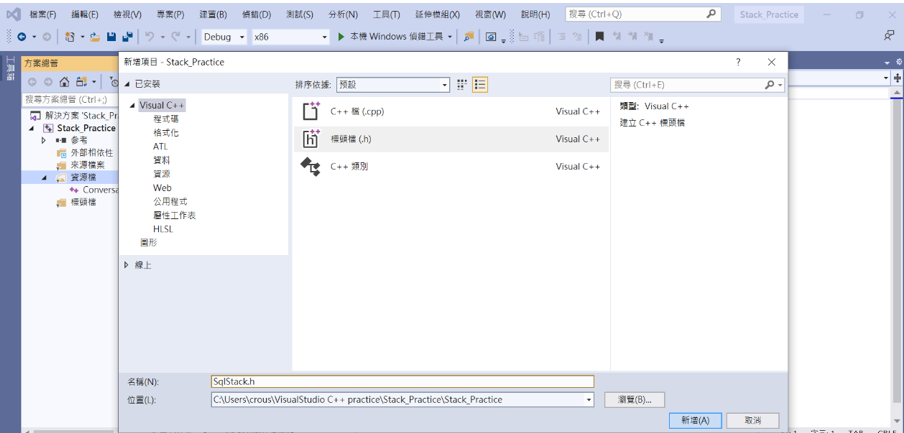
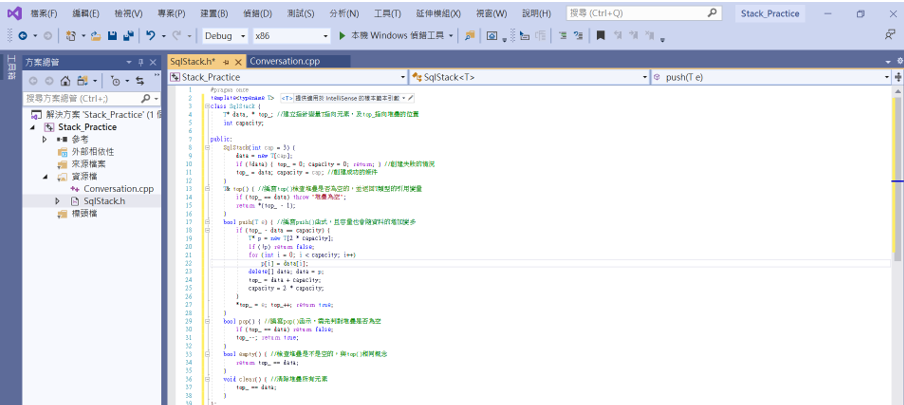
之後就開始實作了。
先解釋std::cin >>s的意思,這個程式的意思是,先建立一個變數,輸入一個數字後換行,之後"cin"就是從鍵盤打數字,這個數字會儲存到變數"s"裡面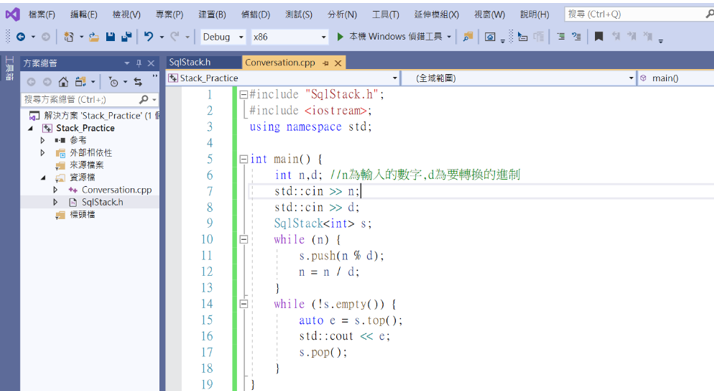
此範例用二進位制換算,更改d的值就能轉換成不同進位。
這樣就完成了,是不是很簡單,那我們繼續下一題。
直接在這個專案新增項目就好,不用創建新的專案,但這邊要注意一個專案不能有兩個main程式,所以必須在之前實作的main程式用#if 0 和 #end if包起來。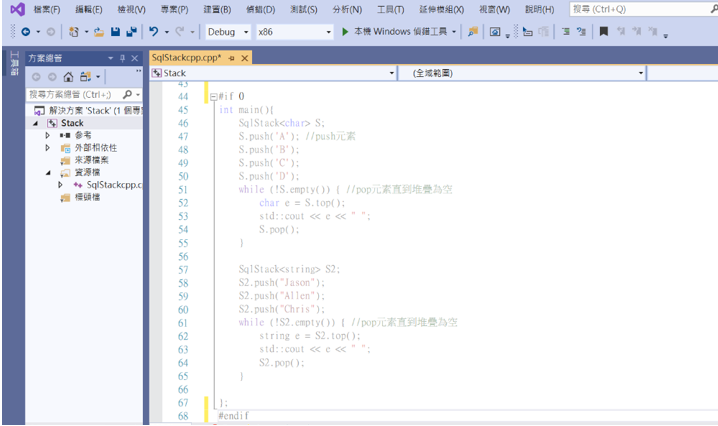
程式碼範例
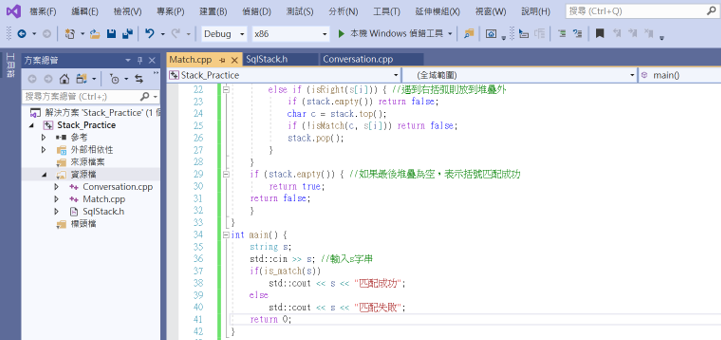
實作結果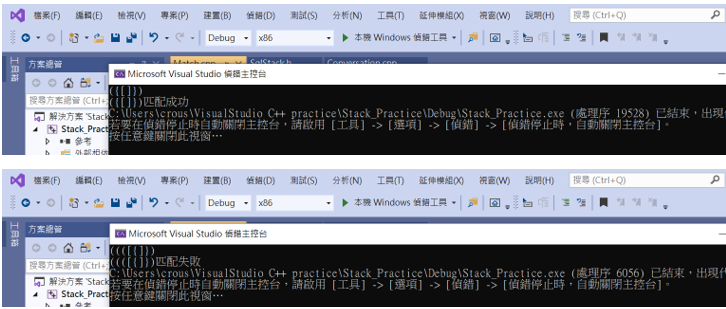
這樣就成功了,括號匹配雖然看似簡單但是其實是非常重要的,還是不能輕忽!
先來解釋河內塔的遊戲規則。
有三根桿子A,B,C。A桿上有數個穿孔圓盤,盤的尺寸由下到上依次變小。要求按下列規則將所有圓盤移至C桿;
每次只能移動一個圓盤且大盤不能疊在小盤上面。
提示:可將圓盤臨時置於B桿,也可將從A桿移出的圓盤重新移回A桿,但都必須遵循上述兩條規則。
試問要如何移?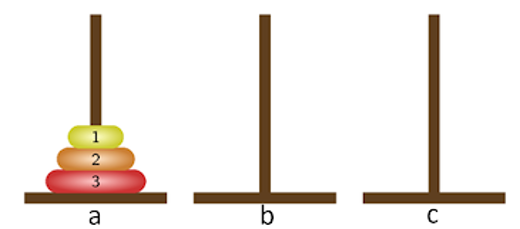
圖片來源:https://sites.google.com/a/g2.nctu.edu.tw/unimath/_/rsrc/1512212597474/manuscript/hanoi/%E5%9C%96%E7%89%871.png?height=208&width=400
這就是河內塔的遊戲規則,接下來就用實作一一解答。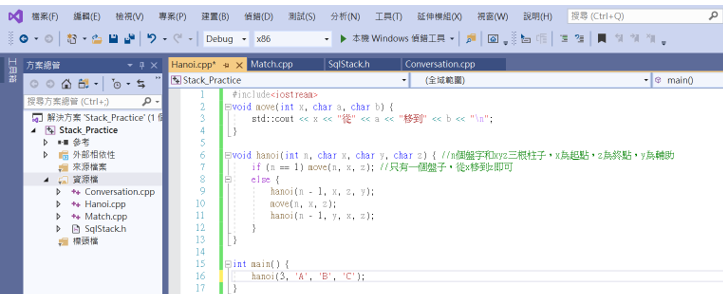
程式碼基本上就是這樣運行(用寫的太複雜,還是用畫的好了)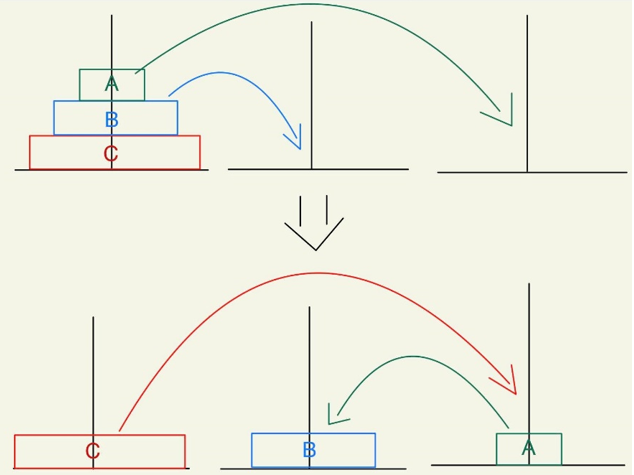
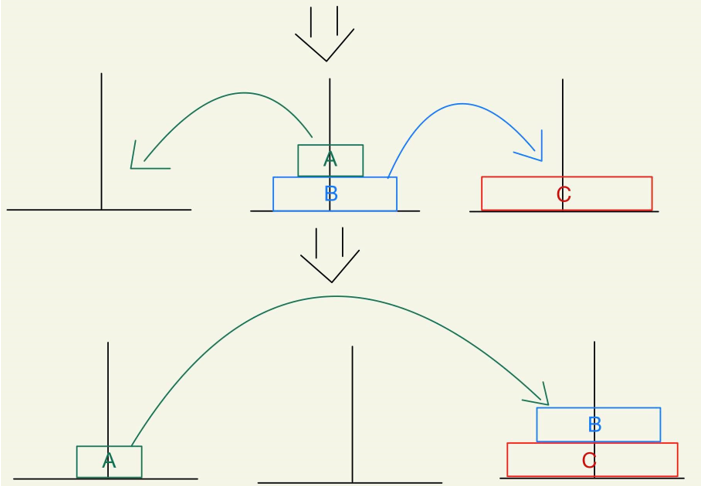
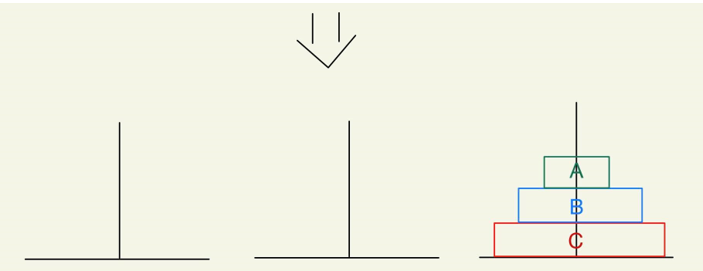
結果就如下圖
三個盤子,共要移動七次,也可以加上移動次數讓程式碼更完整。
本日小結:今天一次就講了三個實作,雖然很累但是也感覺非常充實,三道題目的程式碼都不長,不過括號匹配和河內塔的想法比較複雜,不是三五分鐘就可以搞懂的。這些題目所運用到的技術都有可能在未來使用到,不要認為這些程式碼只能用在對應的題目上,能融會貫通才是真正的學會喔(∩_∩)
明天也將要進入新的單元,大家加油!!!
堆疊標頭檔
#pragma once
template<typename T>
class SqlStack {
T* data, * top_; //建立指針變量T指向元素,及top_指向堆疊的位置
int capacity;
public:
SqlStack(int cap = 3) {
data = new T[cap];
if (!data) { top_ = 0; capacity = 0; return; } //創建失敗的情況
top_ = data; capacity = cap; //創建成功的條件
}
T& top() { //編寫top()檢查堆疊是否為空的,並返回T類型的引用變量
if (top_ == data) throw "堆疊為空";
return *(top_ - 1);
}
bool push(T e) { //編寫push()函式,且容量也會隨資料的增加變多
if (top_ - data == capacity) {
T* p = new T[2 * capacity];
if (!p) return false;
for (int i = 0; i < capacity; i++)
p[i] = data[i];
delete[] data; data = p;
top_ = data + capacity;
capacity = 2 * capacity;
}
*top_ = e; top_++; return true;
}
bool pop() { //編寫pop()函示,需先判對堆疊是否為空
if (top_ == data) return false;
top_--; return true;
}
bool empty() { //檢查堆疊是不是空的,與top()相同概念
return top_ == data;
}
void clear() { //清除堆疊所有元素
top_ == data;
}
};
數制轉換
#include "SqlStack.h";
#include <iostream>;
using namespace std;
int main() {
int n,d; //n為輸入的數字,d為要轉換的進制
std::cin >> n;
std::cin >> d;
SqlStack<int> s;
while (n) {
s.push(n % d);
n = n / d;
}
while (!s.empty()) {
auto e = s.top();
std::cout << e;
s.pop();
}
}
括號匹配
#include <iostream>
#include <string>
#include "SqlStack.h"
using std::string;
bool isLeft(char ch) { //判斷是否為左括弧
return ch == '(' || ch == '[' || ch == '{';
}
bool isRight(char ch) { //判斷是否為右括弧
return ch == ')' || ch == ']' || ch == '}';
}
bool isMatch(const char c1,const char c2) { //判斷是否匹配,const表示不會修改到
if (c1 == '(' && c2 == ')' || c1 == '[' && c2 == ']' || c1 == '{' && c2 == '}')
return true;
return false;
}
bool is_match(string s) {
SqlStack<char> stack;
for (int i = 0; i <= s.size(); i++) {
if (isLeft(s[i])) { //遇到左括弧則放入堆疊內
stack.push(s[i]);
}
else if (isRight(s[i])) { //遇到右括弧則放到堆疊外
if (stack.empty()) return false;
char c = stack.top();
if (!isMatch(c, s[i])) return false;
stack.pop();
}
}
if (stack.empty()) { //如果最後堆疊為空,表示括號匹配成功
return true;
return false;
}
}
int main() {
string s;
std::cin >> s; //輸入s字串
if(is_match(s))
std::cout << s << "匹配成功";
else
std::cout << s << "匹配失敗";
return 0;
}
漢諾塔
#include<iostream>
void move(int x, char a, char b) {
std::cout << x << "從" << a << "移到" << b << "\n";
}
void hanoi(int n, char x, char y, char z) { //n個盤字和xyz三根柱子,x為起點,z為終點,y為輔助
if (n == 1) move(n, x, z); //只有一個盤子,從x移到z即可
else {
hanoi(n - 1, x, z, y);
move(n, x, z);
hanoi(n - 1, y, x, z);
}
}
int main() {
hanoi(3, 'A', 'B', 'C');
}
